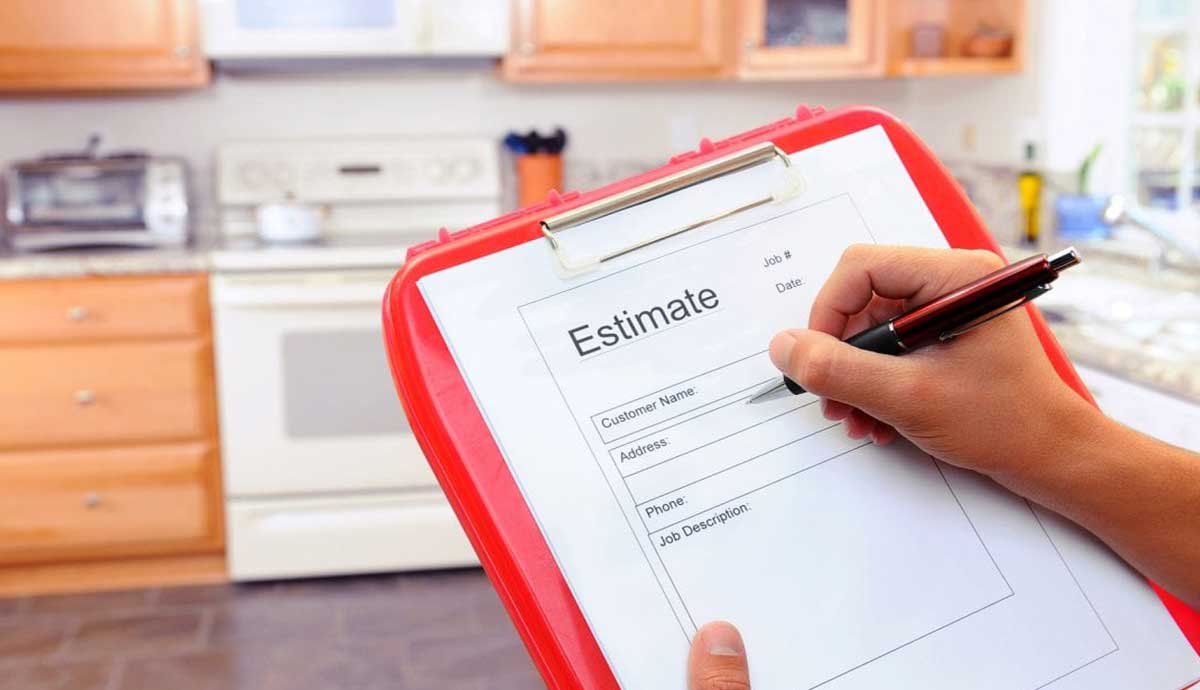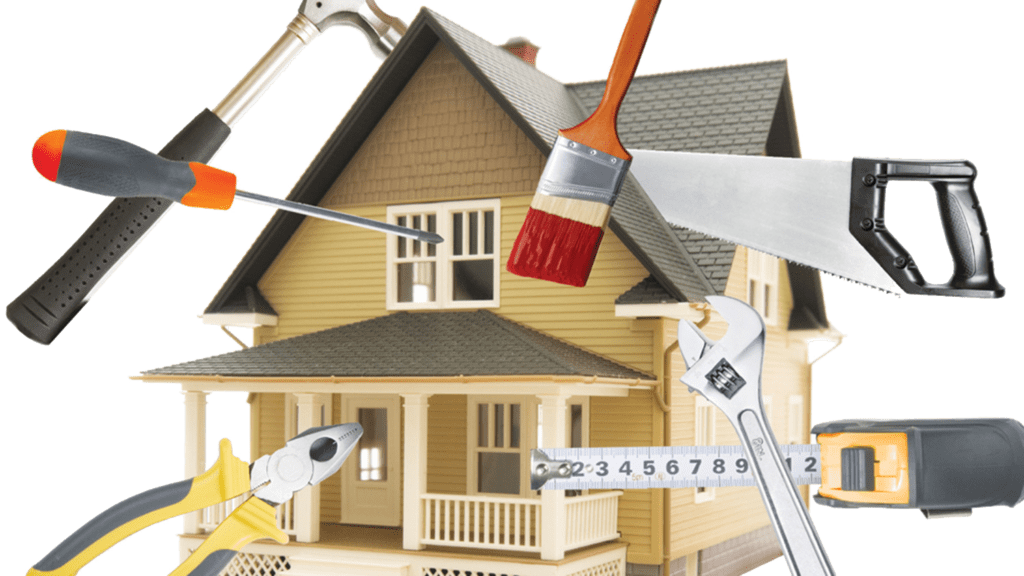Estimates vs Bids?
What homeowners need to know?

Estimates vs bids
Do you know the difference between an estimate and a bid? The terms are often used interchangeably when in reality they mean vastly different things, especially to contractors. If your quest is to get a handle on the potential cost of a project, you need understand what an estimate or a bid really is, and when each is appropriate to use.
Here goes…
An estimate is a forecasted approximation of the cost of work. It is usually stated in a range from best case to worst case i.e. $5,000-$7,000.
A bid is a promise to deliver work at a firmly fixed amount i.e. HPS proposes to replace your irrigation system for $8,425.
So, which is better?
The answer to that question depends on several factors:
- What is the situation? Is it urgent, or do you have plenty of time?
- Is the project big or small?
- Is the project simple or complex?
- Who are you working with? Someone you know and trust, or an unknown?
- What are you trying to accomplish? Quality, Speed, Budget or?
- What is your comfort threshold for risk or cost fluctuations? High or Low?
With a good set of plans, the physical materials needed to do a job can be measured and calculated fairly accurately. On the other hand, even with excellent plans, the labor hours needed to complete a particular job are widely variable and can only be estimated.
Here’s are some examples
- You may be planning to undertake a very large and complex back yard swimming pool project two years from now. Before you spend lots money to hire an architect and develop the highly detailed plans and specifications needed, you would likely want to get at least a rough estimate beforehand to confirm that the project is even feasible. Later, when the plans are complete and your architect has recommended contractors for the job, it may be better for you to get bids from the contractors for comparison. This is especially helpful if you do not know the contractors. You should absolutely never make a decision based upon money alone, but having bids from each one covering exactly the same plans and specifications can help you begin a dialog and eventually narrow down which you feel most comfortable going with.
- On the other hand, if the situation is a broken pipe flooding your kitchen, and any delay will cause more damage and higher costs, you may opt to forego bids and estimates altogether and just get the flooding stopped as soon as possible–cost be damned.
- Another situation may be when you have a good relationship with a skilled contractor and are comfortable with his virtues. (This is a good situation because it can cut out a lot of expense and time that would otherwise be needed for a bid. This can minimize having to hire someone to create detailed plans and specs and eliminate most of the time-consuming bid process altogether.) In this instance the contractor can supply a range of estimated costs based upon a simple scope of work and so long as the scope and estimate are acceptable to you the project can move forward. Work under this arrangement is billed out by the hour at whatever rates are agreed upon. The exact final cost of the work is not known for certain, but as long as it falls within the original estimate range who cares? This approach speeds up the process and ensures your contractor is focused on quality rather than cutting corners to survive.
- In another scenario, perhaps you are just in a hurry and need to get the project underway as quickly as possible. In this instance again, a rough estimate may be all you need or have time for. In this case make sure you thoroughly vet the contractor.
Accurately determining the costs of projects
With a good set of plans, the physical materials needed to do a job can be measured and calculated fairly accurately. On the other hand, even with excellent plans, the labor hours needed to complete a particular job are widely variable and can only be estimated. Why? Labor time is always variable because conditions are different on every job. Workers will come with differing skill levels and aptitudes, and worksites and conditions will be different. Weather can affect production, as can temperature, complexity, and the quality requirements of the work. Only experience and a controlled environment can provide any level of productivity expectations and along with it the ability to accurately forecast labor costs.
Labor time is always variable because conditions are different on every job. Workers will come with differing skill levels and aptitudes, and worksites and conditions will be different.
When talking about the projected cost of a job, a big deal is often made about accuracy. The problem with getting truly accurate cost forecasts is the fact that there are unknown factors to consider. For example, attempting to replace a GFCI outlet only to find that the breaker panel is unlabeled making it difficult to shut off the power. Unknowns are surprises that complicate, delay and make the job more expensive and time consuming.
There are two kinds of these surprises. Known unknowns and unknown unknowns.
These were made famous by past defense secretary Donald Rumsfeld. Known unknowns are those surprise issues that have been experienced before on past projects. You can document these and be aware that they may manifest. Unknown unknowns are the surprise repairs that you have never experienced before and perhaps cannot even imagine…and yet you know they could be waiting for you.
Some say that estimates are not as accurate as bids. I say that if you are trying to determine the actual cost of a project, accuracy is not the real objective. The objective is honesty and estimates are more honest than bids. Estimates approximate the cost of something in a more realistic manner because they are truthful about the fact that some costs are unknowable ahead of time.
A bid is the least truthful of the two. In fact, the more accurate a bid is, the higher the final projected price, because many possible surprise items (known unknowns) will need to be factored in at the worst possible case, in spite of the fact that they may not occur. This is necessary to reduce the contractor’s risk level. In addition, on very large, complex and difficult projects the contractor will also need to consider that there may be the infamous unknown unknown surprise issues to account for. (Example: lumber prices soar thanks to a bark beetle infestation in the forest.) Considerations such as these will also inflate the bid. If the contractor is awarded the job based upon a bid such as this and none of these “surprises” occur, the contractor pockets the savings, not the owner. In this case the owner loses and contractor wins.
The most dangerous situation of all is the “inaccurate” bid proposal. This is a fixed bid proposal from a contractor that has not accounted for any of the unknowns or risk items that are inherent in every project.
The worst scenario
The most dangerous situation of all is the “inaccurate” bid proposal. This is a fixed bid proposal from a contractor that has not accounted for any of the unknowns or risk items that are inherent in every project. These proposals are extremely dangerous to both the homeowner and the contractor and unfortunately, they happen all the time. They are especially frequent when an inexperienced contractor meets with an inexperienced homeowner.
Here’s why they are dangerous. The inexperienced homeowner sees a miraculously low price and jumps on it thinking they have stumbled onto the best deal ever. The inexperienced contractor is proud to have landed a new job, so he promptly buys a new pickup. Soon he begins work only to discover that the project is way more difficult than he thought and is taking longer and requiring more labor than he budgeted for. Also, the costs for materials have jumped unexpectedly and he needs twice the amount that he calculated. His contract is for a firmly fixed amount and almost all of it has been spent. Now he is trapped. He’s halfway through the job and losing money. What are his options? Will he go borrow money from his rich aunt so that he can finish the work in a stellar, excellent manner? Or will he start to cut corners?
Then what’s the real cost?
 The truth is no one will know the real cost of a project until the job is done. I hear from clients all the time “I just want to know how much this is going to cost.” What they are really saying is “I want to know how much I will have to spend.” For most people knowing is better than not knowing. Therefore, they prefer a fixed bid over an estimate… even though the bid (because of the unknown factors mentioned above) will likely result in higher price and a lower quality. We are strange animals.
The truth is no one will know the real cost of a project until the job is done. I hear from clients all the time “I just want to know how much this is going to cost.” What they are really saying is “I want to know how much I will have to spend.” For most people knowing is better than not knowing. Therefore, they prefer a fixed bid over an estimate… even though the bid (because of the unknown factors mentioned above) will likely result in higher price and a lower quality. We are strange animals.
A bid will always take more time, be more expensive and will be less honest. But they do provide maximum price certainty. Bids can be useful when a project is large/complex and an exact spend amount is critical, or when the customer is working with unknown contractors and simply wants several bids to compare.
An estimate on the other hand may not provide as much certainty and emotional security up front about how much the final cost will be, but it is fast, more honest and is perfect for projects that need to be approved and acted upon quickly.
Types of project cost projections
Ballpark estimates
A rough estimate, sometimes called a “ballpark” is a quick, educated guess as to the cost of an imagined project. It is usually needed in advance of all the facts being known and can serve a useful purpose in quickly screening a projects feasibility. A ballpark estimate is certainly not a promise and depending on the experience of the source, may not be a very accurate prediction of the final actual amount. The whole purpose of an estimate is to provide some idea of the cost without taking the time and going to the great expense of fact finding and creating enough documents to get a bid. An estimate from an experienced contractor should be accurate enough (within a given variance of say 15-20%) so as to help a potential client feel secure enough about moving forward with the work.
If the ‘ballpark” estimate for the project looks feasible, one cross-check may be to use an industry-standard cost per foot multiplied by the number of square feet although this is not always possible on small projects.
The next estimate level would be more refined estimates that break down the work considering each separate component of the construction project. Foundations, flooring, roofing, windows, and sanitation, for example, will all require different levels of material, labor and subcontractors, compared to the general ‘one-size-fits-all’ approach of the square foot ballpark estimate. The problem is many times there are no plans to go by so the specifications for each of the components may have to be determined before this can be done well.
Fixed Bids
A bid represents an offer or promise to perform a very specifically described amount of work, for a fixed amount of money. Usually, a bid is also tied to a schedule for the performance and completion of the work. In order to request comparable bids, one must be able to describe the work in detail, exactly the same to all bidders. All of the facts that may affect the cost of the work must be presented including a precise description of the scope of work, plans, accurate measurements, specifications for the components, materials and any special construction processes, and an expected timeline. These are called the “bid documents”. To produce the bid documents necessary to solicit comparable bids takes considerable time and effort that translates to money.
Actually, creating a bid is also a labor intense process where the available information about a project (plans and specs) is analyzed in depth to determine how much it all will cost. This is a lot of work as the components needed for the project must be identified, calculated and priced. First a design and scope of work must be created to quantify the job. This usually requires an architect or designer. From the various bidders the material quantities must be calculated and priced. Quotes from subcontractors must them be solicited for any specialty work. Finally, the labor needed to assemble the materials and manage and produce the end result must be estimated and summed to a total. Waste factors, equipment rentals, inflation, material shortages, non-uniform labor skills/efficiency and weather are all considered, and allowances (padding) must be made for inevitable inaccuracies and variables.
Bids on larger projects are so time consuming and expensive that most contractors will not produce them unless there is a guarantee of fairness to the participating bidders. That means a uniform set of plans and specifications, a formal public bid opening at a fixed time and date, and a guarantee that the project will actually be awarded to the winning bidder.
An advantage to the owner is that a bid allows for knowing the maximum cost. This creates a psychological split between owner and contractor. Once a bid has been accepted and the work begins, the owner’s focus will shift to things other than money like quality or speed of delivery.
On the other hand, once work begins under a bid agreement, the contractor is locked into a price that cannot change. His focus shifts from quality to minimizing expenses since that is the only way to insure profits. This is not just human nature is it necessary in order for the contractor to survive. If the bid is too low quality will suffer. Quality is important to every professional, but it will always take a back seat to survival.
As a result, the bid scenario creates a situation where there is a winner and a loser. If the bid is low, the owner is happy to get a cheap price but if it is too low the contractor may go broke. If the bid is too high, the owner will pay too much, and the contractor will reap a windfall. Neither situation is equal or fair, and further it sets up the possibility for animosity and disputes.
Proposals
Proposals, also known as design/bid proposals are yet another type of service offer that homeowners should know about. A proposal is a bid based upon a scope of work and a set of documents prepared by the bidder. These can be tricky so watch out! Homeowners must be very careful in reviewing work proposals as they may not reflect exactly what is needed or wanted. Proposals cannot be compared to each other on the sole basis of price because there are too many other variables at play such as slightly different work scopes, varying cost of any equipment or material provided, work speed, job cleanliness, differences in workforce skills, the overall quality of the work and the contractors ability to warrant the job. Anyone considering a proposal must fully understand what is being offered and analyze it diligently prior to making any decision.
Summary
Determining the price of a home improvement project is never perfect or easy. As the requirements for accuracy go up, so will the time, information and expenses needed to produce the estimate. The three most used forms of pricing for residential projects are Estimates, Bids and Proposals.
- Estimates are the fastest, easiest and most honest as some unknowns are contemplated and disclosed. Performance contract is on an hourly fee plus any expenses so you only pay for what it costs. If you need the work done now and can stomach some variations in the end cost, estimates are the way to go.
Estimate characteristics:
-
- Do not require an exact scope of work
- Are an approximation of cost based upon someone’s past experience
- Estimates are about labor not material
- Can be calculated quickly
- Are low cost to produce
- Extremely efficient when working with contractors that you trust
- Are least accurate so usually described as a range of costs from x-y.
- Total transparency
- Bids are a formal promise to complete a specific project at a fixed price. Bids take time and are expensive to produce as they require detailed plans and specifications. “Padding” is often added to the final bid price since bids contain risks for the contractor. Most contractors will not provide them “free” unless there is a high probability of getting the job. Work is performed on a fixed price.
Bid characteristics:
-
- Based on an exact and fixed scope of work that someone must provide
- Requires a detailed plan
- Requires detailed specifications
- Take the most time to produce
- Are the most expensive to produce
- Provides a set price for a project. All savings accrue to the contractor.
- Are unsuitable for small projects/repairs because they are not cost effective ie. They can cost more than the repair.
- Proposals are similar to a bid in that it is a promise to complete a specific project at a fixed price. The difference is the contractor provides a description of the scope of work. A proposal might be a good way to go if you know the contractor and are familiar with their quality and reputation. Caveat: the owner must be very diligent in examining the proposal to ensure that the description of the work to be completed, i.e. the materials and scope provided are in fact what is wanted. If you have a project you want to get moving on quickly, consider finding a contractor with a good reputation and request a proposal. You must satisfy yourself that the details of a proposal actually meet your needs and that prices are acceptable. If you decide to go with a proposal, be sure that it also complies with the contract requirements of your state.
Proposal characteristics:
-
- Can be produced quickly
- Most contractors will provide free of charge
- Contractor produces his own scope of work and specifications
- Much like a bid but based upon the contractors work scope, not owners.
- Cannot be used to price shop as proposals are unique and normally not comparable to others
- Usually is combined with a fixed price contract. All savings accrue to contractor.
- Little transparency
A Better Way To Work
Estimates combined with negotiated contracts are called Design/Build agreements. If there are long-term relationships with your contractors I feel that these are a better and more fair way to perform repairs and construction work. The key is to come to an agreement on a reasonable rate or value for the contractor’s labor, then add a percentage fee on the actual costs for managing the work and for profit. This way, the owner gains total transparency to the actual costs of the job, while the contractor is assured that he will survive the process and can then focus on producing quality work for the owner.








